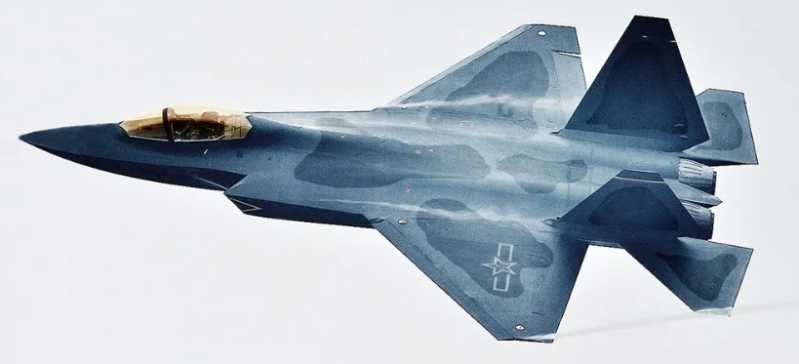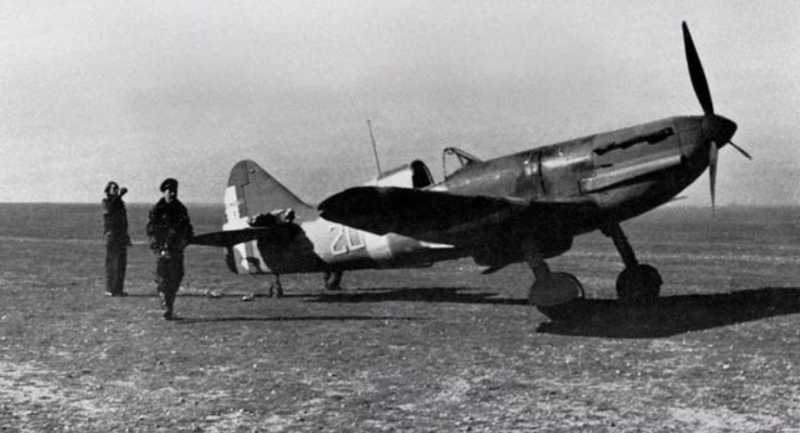Receiver part
The cross section of the 56-punch receiver is "U" shaped, while the cross section of the 81-type receiver is more complex, and the overall shape is like an inverted "convex" shape. From the perspective of receiver rigidity, the stamping of the 81-type inverted "convex" receiver is slightly more troublesome, but the rigidity is better. In addition, the thickness of the 81-type receiver steel plate is 1.5 mm, which is 50% thicker than the 1 mm of the AKM rifle. Although the weight is slightly increased, the strength and rigidity are higher. The 81-type receiver meets the life requirements of 15,000 rounds for rifles and 20,000 rounds for machine guns.
The 81-style receiver has a long service life, but its appearance is not good enough. There is an edge in the middle of the inverted "convex"-shaped receiver, and the lines where the edge and the section sleeve meet are messy and very ugly. From the side of the receiver, there is an angle between the upper and lower edges of the 56-style receiver. With the buttstock at the back and the muzzle at the front, the 56-style receiver is thin in the front and thick in the back, which conforms to the overall layout of the firearms, and has a high appearance. The 81-style receiver has a rectangular + beveled shape, and the rectangular part is longer, the outline lines have a sense of interruption, and the appearance is slightly inferior.
Speed selector
Compared to the 56-style, the ergonomics of the 81-style has improved significantly. The Chong uses a "large paddle" speed selector located on the right side of the receiver. The speed selector relies on its own elastic deformation and the card points on the receiver to achieve positioning, and the force required to turn it is relatively large. When the shooter uses the right thumb to adjust the speed selector, the right hand needs to leave the trigger and the grip, which is not convenient to operate. In theory, the shooter can also put his right hand on the grip diagonally and stretch out his index finger and middle finger to hook the speed selector, but this action is very difficult. The shooter’s fingers may not be that long (such as me), and it is difficult to exert force when the index finger moves up and down, and it is very difficult to turn the speed selector.

The speed selector of the 81-style has been changed to the M16-style knob type, located on the left side of the receiver and above the grip. When the shooter holds the grip with his right hand, he can adjust it with his thumb, which is more convenient and quick to operate. The only drawback is that the 81 The speed selector lever of the 81-type is short, small, and slippery. In addition, the position of the lever shaft is not ideal, and it is not as easy to operate as the M16. In addition, the speed selector of the 81-type has a strange bug-if the shooter pulls the trigger to turn on the safety, the gun will turn into a burst state when the safety is turned on again. Theoretically, no one will pull the trigger to turn on the safety. This "hellish" operation is too weird. But what’s more weird is that this little bug has caused several accidents, which is very surprising.
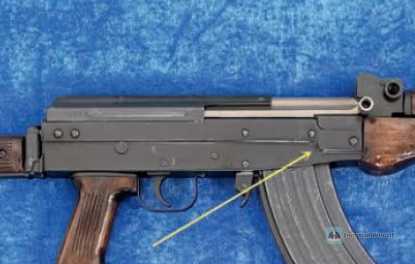
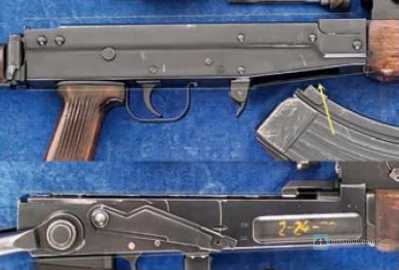

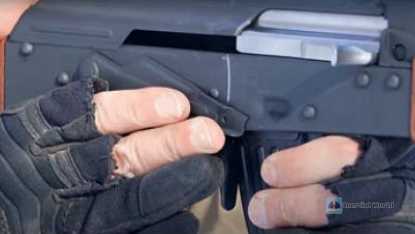
Handguard and grip
The processing quality of the 56 punches I have come into contact with is generally poor, especially the wooden parts, such as the grip and handguard, the surface is very rough, it is easy to hide dirt, and it looks very dirty. Of course, it cannot be ruled out that the 56 punches I have come into contact with are all "antiques", and the surface of the wooden parts is worn out. The surface of the wooden parts of the 81-type rifle I have come into contact with is generally smooth and shiny, and the processing quality is much better.

For a gun, a too smooth surface is not necessarily a good thing. In order to increase the friction of the grip, the 81-style has added anti-skid patterns on the grip. The anti-skid patterns are vertical and deep, which can prevent the shooter’s palm from sliding around the grip, and are more practical than the mesh anti-skid patterns of the 56-style. The shape of the 81-style grip has been optimized, and it is more comfortable to hold than the 56-style grip overall. The 56-style grip and receiver connection position uses a large oblique lining iron, which looks very ugly. The 81-style has changed to a parallel small lining iron, which looks much more beautiful. There is another design on the 81-style grip that interests me. Thanks to the parallel small lining iron, the 81-style grip is installed closer to the receiver. When the shooter holds the gun, the palm is higher, the index finger is closer to the trigger, and the position when pulling the trigger is also higher. But what are the benefits of such a design? This makes me very curious.
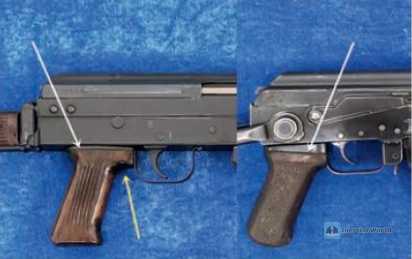
81-style grip is designed with a rounded protrusion on the front upper part, which can cooperate with the trigger guard to give the fingers a comfortable "big bed", which is a very considerate design. The center of gravity of a butt-stocked rifle is poor. When the shooter changes the magazine or does some other actions with the left hand, he must temporarily hold the gun with his right hand alone. At this time, the gun is completely supported by the right hand, and all the weight is first pressed on the fingers.
03-style rifle’s grip protrusion is very short, and for the sake of weight reduction, a weight reduction groove is dug on the guard. When the shooter holds the gun with one hand, the trigger guard is particularly uncomfortable with the fingers. A friend from the military academy complained to me about this problem many times, and then I suddenly realized why the Type 81 was made into such a comfortable "big bed" for fingers.

In addition, the Type 81 is still a very "thin" gun, which is mainly reflected in the handguard. Thanks to the shorter piston axis, the Type 81 handguard is lower and has a smaller grip. When the shooter holds the handguard and shoots, the palm is wrapped more, which allows the shooter to better grasp the gun and is conducive to gun control. In general, foreign gun handguards are fatter, and domestic gun handguards are generally thinner. I used to think that this was because foreigners have big hands and Chinese have small hands. Later I found that foreigners also like thin handguards-round and fat handguards are never a good design.
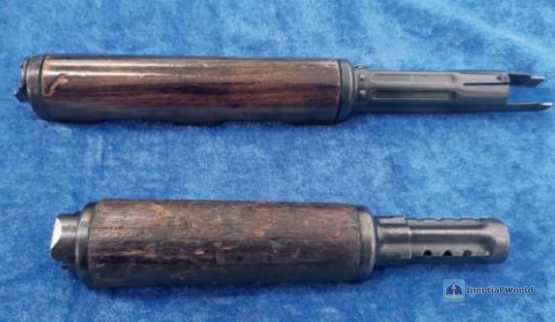
Lifespan awareness
In my opinion, the most valuable technical advancement of the Type 81 is that its lifespan has increased from 10,000 rounds of the Type 56 to 15,000 rounds, an increase of 50%. With a long lifespan of 15,000 rounds for rifles and 20,000 rounds for machine guns, the Type 81 has become the longevity champion among domestic automatic rifles.
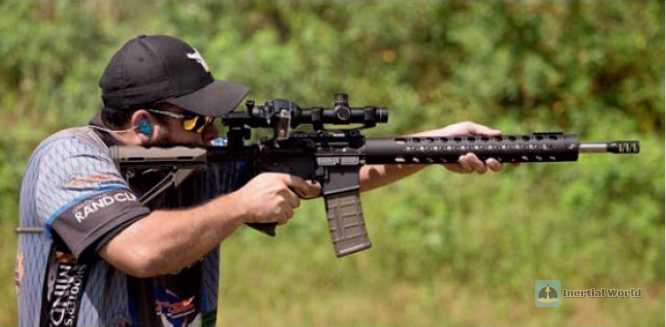
The life of the rifle is increased by 50%, but the cost and difficulty may increase by far more than 50%. The hammer life of the 56-stroke is stipulated to be 15,000 rounds (the hammer life is often much longer than the life of the entire gun), which is actually difficult to meet. During the improvement that lasted for several years, the manufacturer tried various means such as changing materials and fine processing, but the life was still not ideal. Later, the manufacturer added shot peening to the production of the hammer, using countless small steel balls to spray and knock on the surface of the hammer, so that the surface of the hammer was hammered more densely, forming a stronger protective layer, and also covering the processing marks, in order to achieve a higher life.
But shot peening is a relatively troublesome process. After shot peening, the hammer life of the 56-stroke finally reached 15,000 rounds. However, not long after, the cutting receiver of the 56-stroke was changed to a stamping receiver, and the strength of the receiver was weakened to a certain extent, and the life could only barely guarantee 10 000 rounds. Since the machine "died" early, the hammer with a life of 15,000 rounds has lost its meaning, and the shot peening process has been cancelled.

It can be seen that even for a small hammer, it is very difficult to increase the life. As mentioned above, in order to increase the life of the 81-style, the designers redesigned the shape of the hammer; in order to increase the life of the receiver, the thickness of the receiver steel plate was greatly increased, and the cross-section and sleeve structure were redesigned; the weight of the automatic machine was lowered, and the speed of the automatic machine, especially the speed of recoil, also decreased a lot, and the impact on the receiver when it was recoiled was also greatly reduced.
The above work is only a small part of the "life extension" work. The span from 10,000 rounds to 15,000 rounds is so large that every component of the firearm must be changed accordingly, and many processing processes and materials must be changed drastically. The difficulty can be imagined. Many people think that the 81 As an "AK modification", the technical difficulty of the type is not great. This statement is really unfair to the type 81 - just from the perspective of increasing the life by 50%, the difficulty of research and development can be imagined. However, we will then have a question. Since the life of 15,000 rounds is so difficult to achieve, what about replacing it with a lower life and lower cost?
This reminds me of my childhood: my mother had a women’s motorcycle and rode it to pick me up from school all day. There was a part on the motorcycle, I remember it was called a belt, and its function was similar to the chain of a bicycle. The belt is easy to break in the cold winter in the north, and it is a part that can only be replaced but not repaired. In theory, a cheap belt with a low life span is more cost-effective - the life span is indeed lower, but the price is much cheaper. But countless lessons have told me and my mother: belts are still expensive. In many cold winter mornings or evenings, after the belt "struck", my mother and I pushed the car to the repair shop to replace the belt, which I still remember vividly.
You can change the belt of a motorcycle whenever you want, but you can’t change the belt of a gun - the relevant procedures are very troublesome and the process is very cumbersome. In fact, many guns are actually in service beyond their service life. Even if they are broken, they still keep working. Only when new guns arrive, the old guns will really "retire". As for the ideal standard of scrapping after firing XX rounds, it is actually difficult to implement - it is difficult for us to intuitively judge how many rounds a gun has fired.
In many people’s imagination, if a part of a gun is broken, the soldier can report to the logistics department and replace the new part or even a new gun in time. But logistics is never enough. In general, the equipment of a country is generally "make do". In this case, if the life of the firearm is longer and more durable, the pressure on logistics can be significantly reduced. We can generally understand that high-life and high-cost firearms are high-quality goods, and low-life and low-cost firearms are cheap goods. High-quality goods are more durable and less troublesome, so they can be sold at a high price, which is not difficult to understand.
In my opinion, long life should be the unremitting pursuit of the firearms field. The new materials, new processes, and new structures required to increase life are worthy of tireless investment and research and development, although the paper benefits of doing so are not good. And cost-effectiveness is sometimes a kind of poison that looks beautiful on paper - the cost savings will always be compensated in another form. Of course, increasing life should not be at the expense of weakening performance. The "surface life extension" of cutting feet to fit shoes is also undesirable. The life of the 81-type has been greatly increased compared to the 56-type, and the performance is better. This is really a huge improvement.
Reflection on reliability
We have always been very confident in the reliability of our own firearms. 1980 In the 1990s, my country imported a number of famous contemporary guns, such as the Belgian FNC rifle, the Minimi machine gun, the French FAMAS, the Austrian AUG rifle, etc., and conducted a large number of tests on these guns, including reliability.
What is unexpected is that many famous foreign guns have failed in our country’s reliability tests. The drop and river immersion tests have become "famous gun killers", killing many foreign famous guns. For example, the very trendy AUG and FAMAS at the time had a series of failures in the river immersion and wind and sand tests. The FAMAS was even more "stuck" in the low-temperature drop test. The gun looked normal, but it could not shoot at all, and the AUG broke cleanly.

So, being able to pass our country’s reliability test has become the pride of Chinese guns. When our media promote guns, they often focus on reliability tests. When I was an undergraduate, teachers would always be proud of the reliability of Chinese firearms in class, and I still remember that look. However, "a coin has two sides" and the reliability of firearms actually comes at a price.

Take the automatic machine as an example. The automatic machine quality and recoil energy of Chinese firearms are generally greater than similar foreign products. High-energy, high-quality automatic machines are like heavy trucks, with very surging energy, which is very good for the reliability of firearms and easier to pass reliability tests. However, truck-like automatic machines mean more serious center of gravity movement and collision, which affects the stability of the firearm when shooting, and ultimately affects the accuracy of the firearm.
The coordination between the automatic machine and the receiver is also closely related to the reliability test results. The tight cooperation between the automatic mechanism and the receiver will lead to a high consistency in the movement of the automatic mechanism, a more consistent state of the gun each time it is fired, and a better accuracy. However, tight coordination "cannot tolerate sand! The tighter the coordination of the firearm, the worse the performance in the reliability test.
To a certain extent, accuracy and reliability are mutually exclusive. The consistent practice in China is to sacrifice accuracy to make up for reliability. Whether it is the Type 92 pistol or the Type 95 rifle, the recoil energy is very sufficient, and the coordination of the automatic machine/slide and the receiver/launcher seat is also "loose". This certainly ensures reliability, but the cost is not small-the recoil of the Type 92 pistol is large and the gun is not easy to control, and the Type 95 has similar shortcomings.
However, there is an exception in the Type 81. Compared with the Type 56, the weight and energy of the automatic machine of the Type 81 have been greatly reduced, and the coordination between the automatic machine and the receiver is tighter. Judging from the experience of reliability testing, the performance of the Type 81 in reliability tests must not be better than that of the Type 56. However, in actual use, we rarely hear about the Type 81. So I had a bold idea - the results of the reliability test are not equal to reliability, at least not completely equal to reliability. The reliability test conditions are very harsh. Immersion in river water and dust are the gates of hell for firearms. They are very difficult and can "veto" the reliability of firearms. The possibility of the test firearm passing these tests at one time is very small, and it often takes "two or three tests" to pass.
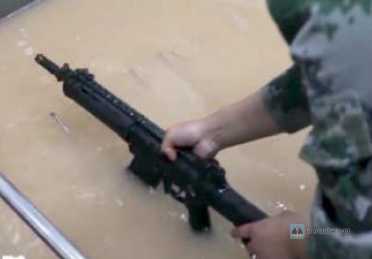
A firearm "lives" in ordinary environments most of its life, not extreme environments. Therefore, the reliability advantage in extreme environments is difficult to reflect. In ordinary environments, the accuracy lost to ensure reliability can be clearly reflected.
Compared to the 56, the 81 is a typical loss of reliability to make up for accuracy, but the 81 The Type 81 has received very good reviews. Sometimes I wonder if we don’t pursue reliability in extreme environments so much, at least in controversial tests such as immersion in river water, slightly lower the reliability standards of the gun, and let the gun feed back some of its reliability to accuracy, will the overall benefits be better?
Reflections on the Type 81 in the new era
In recent years, I have been thinking about a question: From the perspective of gun design, the Type 81, as an "AK modification", lacks novelty, objectively has no obvious progress, and lacks innovation, but from the perspective of user evaluation, the Type 81 is the best-rated generation of domestic guns. The views of design and users should be unified, but now they are highly opposed. Why is this?
Now HK416 The popularity of the rifle also made me think. To some extent, the HK416 and the Type 81 are very similar - one is an "M4 modification" and the other is an "AK modification"; one has won good reviews abroad and the other has won good reviews at home; one has changed the air-blowing to a short piston and the other has changed the long piston to a short piston; both have undergone a lot of mechanism re-optimization, and their lifespans have been greatly increased.
So, on the Type 81 and the HK416, I came to a conclusion: the era of firearms development has long entered a conservative era, an era from the bottom up.
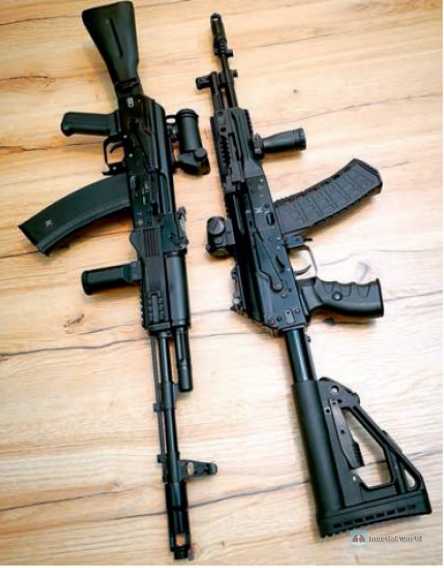
I think there are two ways of thinking about firearms development. The first idea is the designer’s idea, that is, the top-down idea, the top refers to the designer, and the bottom refers to the user (soldiers). Each generation of products from the top-down idea is very innovative, and each generation often subverts the user’s usage habits. Fortunately, new products always bring huge technical advantages. Even if the usage habits are subverted, after the gains and losses are offset, it is still very cost-effective overall. From non-automatic rifles to Maxim machine guns, and then to assault rifles, each generation of firearms looks different, and the usage habits are fundamentally different, but overall they are making great progress, and the replacement of firearms is definitely cost-effective.
The second idea is the user’s idea, that is, the bottom-up idea, which is essentially a conservative improvement idea. I love chatting with friends who have served in the military, and I found a rule from it: soldiers are actually not familiar with the world’s firearms pattern. Germany’s HK433, the United States’ LWMMG, and Russia’s A545, these new firearms, soldiers may not know as much as a military fan. If you ask him how firearms will develop in the future, the soldier probably can’t say anything.
However, soldiers often know the advantages and disadvantages of their rifles. The better the soldier, the more detailed his "business" is, not the wider it is.
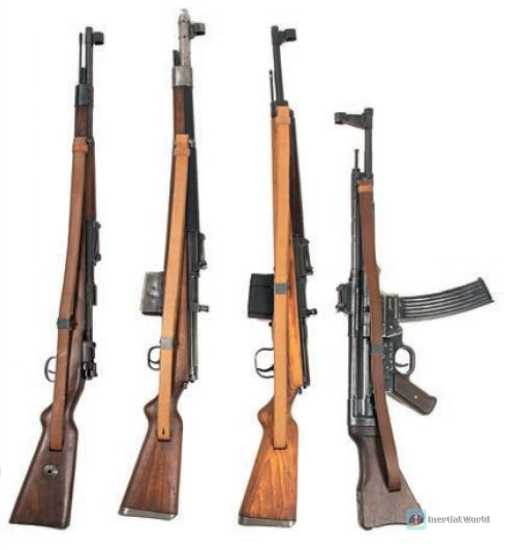
If you give him a brand new and completely different rifle, the soldier may need to learn for a while to master it, to overcome its shortcomings and to play its advantages. However, if you give a soldier an improved version of the rifle, which retains the original advantages and habits but eliminates the shortcomings, the soldier will definitely be very happy, much happier than getting that brand new rifle, after all, he is familiar with this rifle.
In different historical periods, the two ideas have different developments. One hundred to fifty years ago was the peak period of top-down thinking. The firearms born during this period are often born out of the personal talents of designers, and users can only accept them in a confused and muddled way, and sometimes they will fiercely oppose new things.
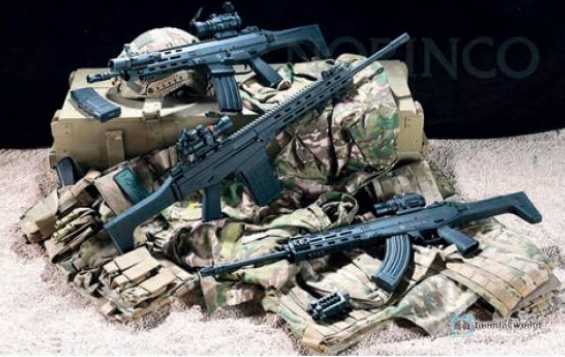
The most typical top-down thinking is Stg44 and the assault rifle it represents. This firearm is a leader of the times, but its fate is very tortuous. At the beginning, the Stg44 (Mkb42) gun was submitted to Hitler by the German Army Weapons Bureau as a light machine gun, but was rejected by Hitler. So in 1943, it was equipped with the German army in the name of MP43 submachine gun and finally corrected. In 1944, it got the official name of Stg44 and truly became an assault rifle.

The designers of Stq44 and the German Army Weapons Bureau are both "superiors" with advanced thinking. Although they have also made some confusing operations, such as calling Stg44 a light machine gun, their thinking is generally advanced. The soldiers of the German army are the real "inferiors". Whether Stg44 is called a submachine gun or a light machine gun, they actually have no right to choose the firearms to use, but just passively accept it.
Today’s era is completely different from that of the past. The technological progress of firearms has been quite limited. Every revolutionary progress of firearms is accompanied by revolutionary progress of bullets. Since the birth of 5.56x45 mm small-caliber bullets, the era of small-caliber bullets has lasted for more than 50 years. Under the premise that the bullets are not updated, the room for improvement of small-caliber rifles is very limited - no matter what tricks the designers "play", there will not be much room for improvement. Since the 1980s, several top-down revolutions on rifles have all failed. In the 1980s, the US ACR program verified a series of advanced solutions such as caseless bullets: arrow-shaped bullets, double-headed bullets, etc.; in the 1990s, the Russians came up with the Abaghan plan, trying to greatly improve the accuracy of rifle bursts; after 2000, OICW, which combines traditional small-caliber rifles and programmable grenades, became a new favorite. The firearms solutions in these plans are more sci-fi than one another, but none of them have been truly mass-produced and equipped.

Today is the heyday of modular rifles. Japan, Czech Republic, Germany, and even my country are following this trend. But the modular rifle is essentially a small-caliber rifle. It just adds new modular functions. It lacks essential progress and is far less bold than ACR and Abaghan. Judging from market feedback, the modular rifles from top to bottom are more hype than action, and their sales are not as good as the "piston M4" of various companies.
In essence, the modular rifle is a small-caliber rifle, which lacks advancement in performance compared to the traditional piston M4. Under the premise of lack of advancement, the new products from top to bottom are actually not of much value - they not only subvert the user’s usage habits, but also bring little benefits, which is really not cost-effective.
It is difficult to develop from the top-down approach, so it is better to do the opposite, to improve the old products and take the bottom-up approach. Bottom-up does not mean that soldiers ask to be designers, but that designers improve according to the needs of soldiers, rather than designing new firearms - especially under the premise that the old firearms themselves are excellent. The HK416, as a modified M4, is a bottom-up success, and the Type 81, as an "AK modification", is also a bottom-up success. Of course, firearms have undergone many changes in recent years. For example, the popularity of Picatinny rails, the large-scale application of scopes, and the substantial increase in accessories. However, these technologies are not the core content of firearm development. Although they will affect firearms, they will not affect the essential development trend of firearms. Any firearm can achieve these functions as long as it is willing.
Let’s talk about the Type 81 again. As an "AK modification", the Type 81 lacks novelty, objectively has no obvious progress, and lacks innovation. However, in the era of bottom-up, this is the biggest advantage of the Type 81. Soldiers who have used the Type 56 will not be too unfamiliar with the Type 81. Many training, use, and maintenance habits can be directly inherited, which is a huge advantage. In the absence of substantial technological progress, it is the most appropriate approach to take a bottom-up approach and not impact the user’s usage habits, but to launch improved products. If you still want users to "bow" for the new gun, abandon their original usage habits, re-learn, and re-adapt, you must make the new gun have enough technical progress to make users feel that it is worth it.
Summary
AK47 is a very good firearm, but the Type 81, a Chinese rifle, is better than the AK47. In the early 1980s when technology was not developed and the foundation was not strong, this was a real miracle. If the AK47 The Type 81 is the Napoleon of firearms, and the Type 81 is the Wellington that defeated Napoleon. The legendary story is worth listening to and thinking about carefully. In the next lecture, we will talk about one of the most controversial domestic rifles - the Type 95 rifle.








